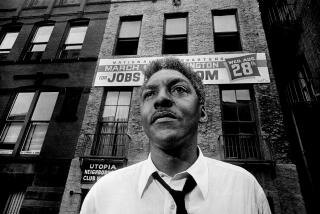Interfaith Movement Is Key to World Harmony
- Share via
A worldwide struggle is raging over what kind of religion will prevail during the 21st century -- an exclusive or fundamentalist approach that sees one religion as possessing the whole truth, or a pluralist version that acknowledges and welcomes many sources of truth.
On the exclusivist side, conservative or Wahhabist Islam is pitted against evangelical Christianity, with each viewing the other as false and corrupt (the Wahhabists extend their indictment to all Christians as well as Jews). The debate has intensified since 9/11 and the war in Iraq. On the pluralist side, a growing interfaith movement is holding international meetings and cooperating on humanitarian projects. One such meeting will take place at Hsi Lai University in Rosemead next weekend.
Of course, the whole matter is more complex than exclusivist versus pluralist. Many Christians, Muslims and other believers consider their religion as possessing the most truth or the best path to fulfillment and salvation. But they concede the legitimacy of the other faiths. Or, in the case of most liberal Protestants and Roman Catholics, they believe that Jesus’ death and resurrection made possible the salvation of all human beings who live a moral life.
Hindus and Buddhists take the most relaxed approach to the salvation question, arguing that there are many paths to liberation or enlightenment. Jews, Sikhs and Baha’i faith members generally ask only that a person be a monotheist and live an upright life to attain happiness in the next world.
So is religious coexistence an impossible dream? Those viewing interreligious harmony as a quixotic quest argue that history is replete with religious wars, that religions are inherently competitive and conversionary, that they are sometimes co-opted by national or territorial ambitions (as in the dispute between India and Pakistan over Kashmir), and that the human tendency toward conflict makes peace among religions as daunting as peace between national or ethnic groups.
Pluralists respond that the golden rule -- brotherly and sisterly love -- is the centerpiece of all religions, and that there have been remarkable periods in history of religious tolerance, including the coexistence of Jews, Christians and Muslims in medieval Spain.
Pluralists add that the 1st Amendment’s guarantee of religious freedom and prohibition against Congress endorsing a religion make America a beacon of religious tolerance.
But perhaps the strongest reason to hope a more pluralist philosophy will characterize this century is the growing worldwide interfaith movement. The Hsi Lai event will bring together interfaith activists from across Southern California to celebrate their shared belief in the power of religion to promote peace and reconciliation. The meeting is one of many worldwide leading up to the next international meeting of the Council for a Parliament of the World’s Religions (CPWR) next summer in Barcelona, Spain.
The Parliament movement began in Chicago in 1893 as part of the Columbian Exposition. For the first time in history, leaders representing the major world religions met to explain their faiths in an atmosphere of mutual respect and tolerance. A photograph from that remarkable event depicts delegates from many lands dressed in diverse religious garb and seated together onstage -- harbingers of an interfaith tide that continues to flow.
Several attempts to reprise the Parliament movement failed, but Chicago hosted another gathering in 1993 -- this time with 8,000 attendees. The CPWR met again in Cape Town, South Africa, in December 1999. Fittingly, the Barcelona meeting’s theme is “Pathways to Peace: The Wisdom of Listening, the Power of Commitment.”
One of the organizers of the Hsi Lai retreat is Kay Lindhal, Laguna Niguel interfaith activist and author of “The Sacred Art of Listening.” Her book’s theme resonates with that of the Barcelona conference and with the needs of a world where listening to the religious or ethnic other is all too infrequent.
Although the voice of the interfaith movement represented by the CPWR might seem small, it is growing. In the late 1990s, Episcopal Bishop William E. Swing of San Francisco founded the United Religions Initiative, dedicated to interfaith humanitarian work at the local level in several countries. Also influential are the World Conference on Religion and Peace and the Temple of Understanding, the latter group founded in the 1960s by Juliet Hollister with help from Eleanor Roosevelt. Both groups have close ties to the United Nations.
The organizers of the Hsi Lai event identified 45 interfaith organizations in the greater Southern California region, 18 of which are based in Orange County. Most of the organizations work closely with the local affiliate of the National Conference for Community and Justice.
After 9/11 only a cautious optimism for religious peace is possible. Yet, as Catholic theologian Hans Kung has said, without peace between religions, peace between nations will elude us. And peace between religions begins with dialogue, listening and responding. The gathering at Hsi Lai is another step down the road to a pluralism that nurtures respect for the religious other and blunts the power of fundamentalist intolerance.
More to Read
Sign up for Essential California
The most important California stories and recommendations in your inbox every morning.
You may occasionally receive promotional content from the Los Angeles Times.










